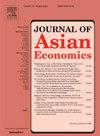Understanding capital controls measurement: Need, classification, and suitability
IF 3.4
3区 经济学
Q1 ECONOMICS
引用次数: 0
Abstract
This study critically reviews the literature on the measures of capital controls, focusing on the conceptual and empirical challenges associated with both de jure and de facto indicators. We document the historical evolution of these measures over the period 1980–2022, classify them into subcategories, and assess their relative strengths, weaknesses, and suitability for policy analysis. We find that de jure measures, particularly capital control actions (CCAs), are generally more appropriate than de facto measures for evaluating policy effects, as they better capture the variation in legal restrictions. Among the de jure indicators, the intensity of policy capture varies, with Pasricha et al. (2015) outperforming Fernández et al. (2016) and Chinn and Ito (2008). We also identify two critical gaps in existing datasets: (i) the absence of direction-specific (inward/outward) and action-specific (tightening/easing) coding for financial sector capital controls; and (ii) the lack of a severity-weighted approach to CCAs that distinguishes marginal procedural changes from sweeping policy shifts. Addressing these gaps offers clear avenues for the construction of more granular and analytically powerful capital controls indicators.
理解资本控制计量:需求、分类和适用性
本研究批判性地回顾了有关资本管制措施的文献,重点关注与法律和事实指标相关的概念和经验挑战。我们记录了这些措施在1980-2022年期间的历史演变,将它们分类为子类别,并评估它们的相对优势、劣势和政策分析的适用性。我们发现,法律上的措施,特别是资本管制行动(CCAs),通常比事实上的措施更适合评估政策效果,因为它们更好地反映了法律限制的变化。在法律指标中,政策捕获的强度各不相同,Pasricha等人(2015)的表现优于Fernández等人(2016)和Chinn和Ito(2008)。我们还确定了现有数据集中的两个关键缺口:(i)缺乏针对金融部门资本管制的具体方向(向内/向外)和具体行动(收紧/放松)编码;(ii)缺乏针对共同承诺协定的严重程度加权方法,以区分边际程序变化与全面政策转变。解决这些差距为构建更精细、分析能力更强的资本管制指标提供了明确的途径。
本文章由计算机程序翻译,如有差异,请以英文原文为准。
求助全文
约1分钟内获得全文
求助全文
来源期刊

Journal of Asian Economics
ECONOMICS-
CiteScore
4.70
自引率
9.40%
发文量
90
期刊介绍:
The Journal of Asian Economics provides a forum for publication of increasingly growing research in Asian economic studies and a unique forum for continental Asian economic studies with focus on (i) special studies in adaptive innovation paradigms in Asian economic regimes, (ii) studies relative to unique dimensions of Asian economic development paradigm, as they are investigated by researchers, (iii) comparative studies of development paradigms in other developing continents, Latin America and Africa, (iv) the emerging new pattern of comparative advantages between Asian countries and the United States and North America.
 求助内容:
求助内容: 应助结果提醒方式:
应助结果提醒方式:


